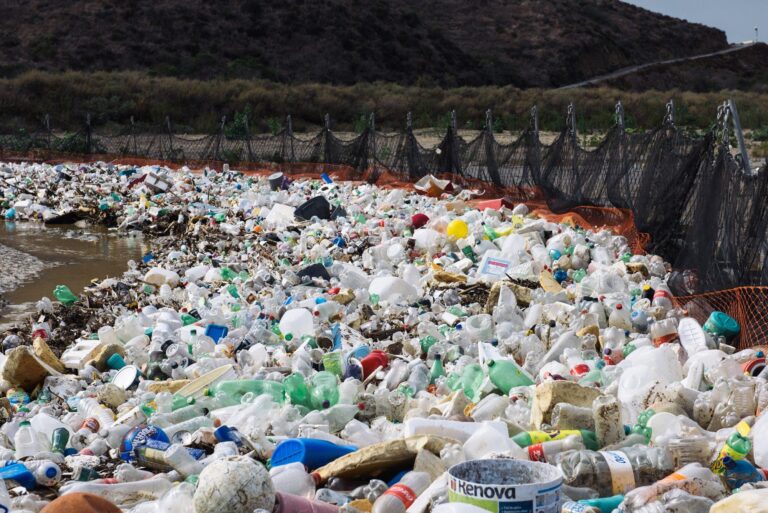In a significant development addressing a longstanding environmental and public health challenge, the United States and Mexico have reached a collaborative agreement to tackle the ongoing sewage contamination in the Tijuana River. The pact aims to implement comprehensive measures to reduce pollution flowing from Tijuana into the river, which has frequently caused flooding and health hazards in the San Diego region. This cross-border effort marks a pivotal step toward improving water quality and safeguarding communities on both sides of the border, officials announced Wednesday.
U.S. and Mexico Collaborate to Address Tijuana River Sewage Problem
Authorities from both sides of the border have agreed to a comprehensive plan aimed at curbing the persistent pollution crisis plaguing the Tijuana River. This joint initiative focuses on enhancing wastewater infrastructure, increasing monitoring, and deploying rapid-response teams to minimize sewage spills into the river and its adjacent waterways. Key measures include:
- Upgrading sewage treatment plants to increase capacity and reduce overflow incidents.
- Installing advanced water quality sensors for real-time pollution tracking.
- Launching community engagement programs to raise awareness about pollution prevention.
Early projections for the project timeline reveal a phased approach to address both immediate and long-term environmental impacts. The following table outlines the key milestones and expected completion dates:
| Milestone | Target Date | Objective |
|---|---|---|
| Infrastructure Assessment | Q3 2024 | Identify critical repairs and upgrades |
| Treatment Plant Expansion | Q1 2025 | Increase capacity by 30% |
| Sensor Deployment | Q2 2025 | Install monitoring equipment |
| Community Outreach Launch | Q3 2025 | Engage local stakeholders |
Key Environmental Challenges and Health Risks of the Tijuana River Crisis
The ongoing contamination of the Tijuana River has led to significant environmental degradation across the border region. Overflow of untreated sewage has severely polluted river waters, causing widespread destruction of vulnerable ecosystems and disrupting the habitat of local wildlife. Toxic pollutants and debris have not only harmed aquatic life but have also impaired water quality, threatening the region’s biodiversity. Efforts to restore these natural environments have been hampered by the persistent influx of waste, highlighting the urgent need for binational cooperation to address the root causes of the crisis.
Health risks to surrounding communities have soared, with increased exposure to dangerous pathogens carried by raw sewage. Residents on both sides of the border face elevated risks of diseases such as hepatitis, gastrointestinal infections, and skin ailments. The lack of proper sanitation infrastructure further exacerbates the situation, putting vulnerable populations, including children and the elderly, at heightened risk. According to recent health data:
| Health Impact | Reported Cases Increase | Most Affected Groups |
|---|---|---|
| Hepatitis A | 35% rise | Children under 12 |
| Gastrointestinal Infections | 50% rise | Adults 20-45 |
| Respiratory Issues | 22% increase | Elderly populations |
New Binational Infrastructure Projects and Funding Commitments Announced
The governments of the United States and Mexico have unveiled a bold plan to address the persistent sewage issues affecting the Tijuana River, signaling an unprecedented level of cooperation between the two nations. This initiative includes multi-million dollar investments aimed at enhancing wastewater treatment infrastructure on both sides of the border. Central to the project is the expansion of existing treatment plants and the installation of advanced filtration systems to drastically reduce pollution runoff into the river, which has long threatened the environmental health and public safety of the surrounding communities.
Key components of the funded projects include:
- Construction of new sewage interceptors to capture overflow from Tijuana’s wastewater system
- Upgrades to cross-border monitoring stations to ensure real-time water quality assessments
- Enhanced community outreach programs focusing on public health awareness and cooperation
| Project Component | Estimated Cost (USD) | Completion Timeline |
|---|---|---|
| Sewage Interceptor Construction | $120 million | 2026 |
| Treatment Plant Upgrades | $80 million | 2025 |
| Monitoring System Enhancement | $15 million | 2024 |
Experts Urge Continued Cooperation and Community Engagement Strategies
Leading environmental and policy experts emphasize that addressing the Tijuana River sewage crisis requires more than infrastructure fixes; it demands sustained binational collaboration and proactive community involvement. Both U.S. and Mexican authorities are encouraged to maintain transparent communication channels, ensuring that residents on both sides of the border stay informed and engaged throughout the implementation process. Experts stress that public education campaigns and grassroots initiatives will be crucial in reducing local pollution sources and fostering a shared responsibility mindset.
Effective strategies recommended by specialists include:
- Community-led cleanups: Empowering local volunteers to regularly maintain riverbanks and report pollution incidents.
- Stakeholder partnerships: Involving environmental groups, municipal officials, and businesses to create holistic solutions.
- Educational outreach: Developing bilingual programs to raise awareness about the health and environmental impact of sewage discharge.
| Strategy | Focus Area | Expected Impact |
|---|---|---|
| Community Education | Awareness & Prevention | Reduced Pollution |
| Cross-border Coordination | Policy & Regulation | Streamlined Solutions |
| Volunteer Initiatives | River Cleanups | Improved Water Quality |
In Retrospect
The newly reached agreement between the U.S. and Mexico marks a significant step forward in addressing the longstanding sewage challenges plaguing the Tijuana River. While implementation will require sustained cooperation and ongoing investment, officials on both sides express cautious optimism that the plan will bring much-needed relief to affected communities and protect the region’s environmental health. As work commences, residents and stakeholders alike will be watching closely to ensure commitments translate into tangible progress.







